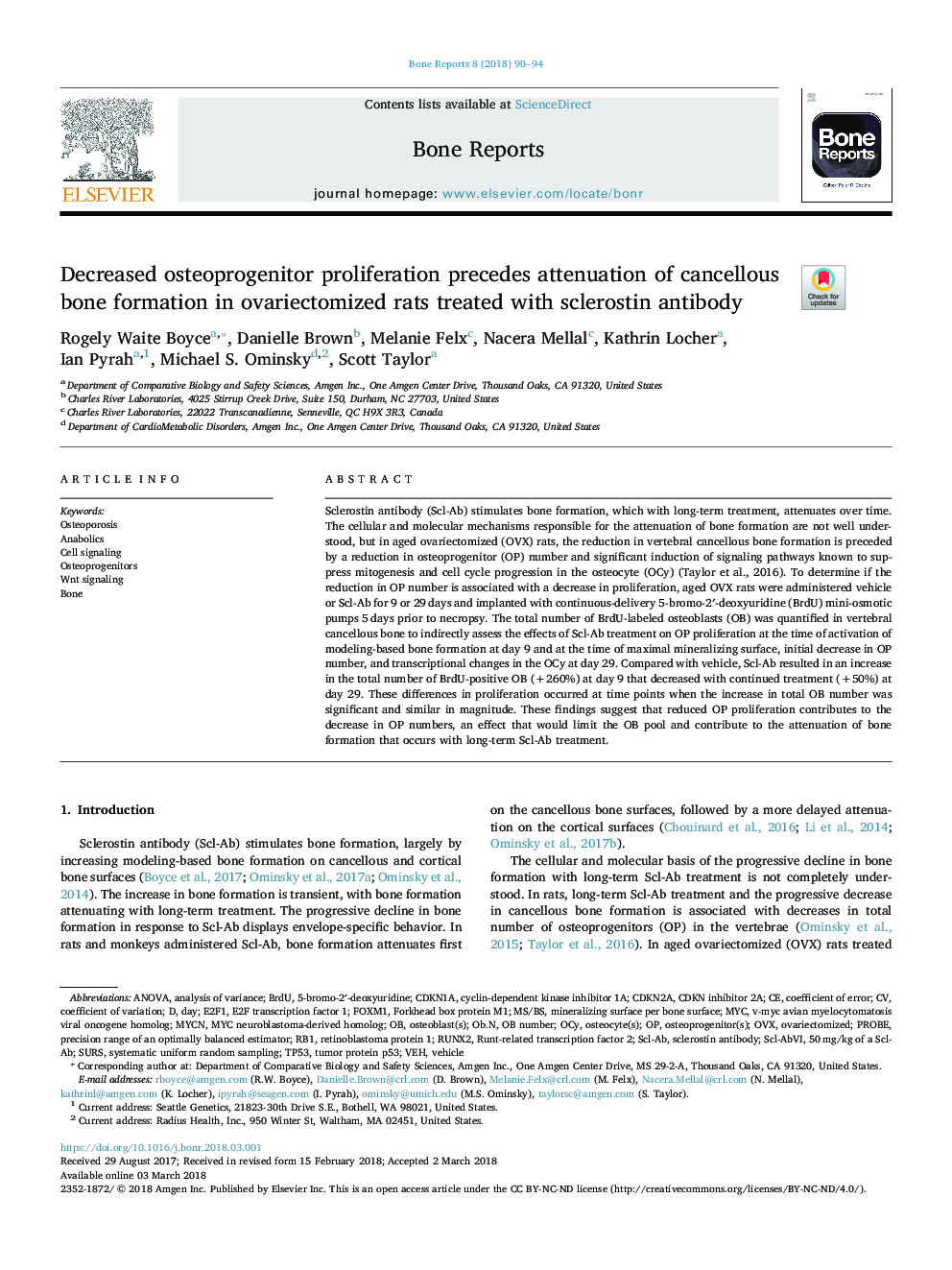| Article ID | Journal | Published Year | Pages | File Type |
|---|---|---|---|---|
| 8627590 | Bone Reports | 2018 | 5 Pages |
Abstract
Sclerostin antibody (Scl-Ab) stimulates bone formation, which with long-term treatment, attenuates over time. The cellular and molecular mechanisms responsible for the attenuation of bone formation are not well understood, but in aged ovariectomized (OVX) rats, the reduction in vertebral cancellous bone formation is preceded by a reduction in osteoprogenitor (OP) number and significant induction of signaling pathways known to suppress mitogenesis and cell cycle progression in the osteocyte (OCy) (Taylor et al., 2016). To determine if the reduction in OP number is associated with a decrease in proliferation, aged OVX rats were administered vehicle or Scl-Ab for 9 or 29â¯days and implanted with continuous-delivery 5-bromo-2â²-deoxyuridine (BrdU) mini-osmotic pumps 5â¯days prior to necropsy. The total number of BrdU-labeled osteoblasts (OB) was quantified in vertebral cancellous bone to indirectly assess the effects of Scl-Ab treatment on OP proliferation at the time of activation of modeling-based bone formation at day 9 and at the time of maximal mineralizing surface, initial decrease in OP number, and transcriptional changes in the OCy at day 29. Compared with vehicle, Scl-Ab resulted in an increase in the total number of BrdU-positive OB (+260%) at day 9 that decreased with continued treatment (+50%) at day 29. These differences in proliferation occurred at time points when the increase in total OB number was significant and similar in magnitude. These findings suggest that reduced OP proliferation contributes to the decrease in OP numbers, an effect that would limit the OB pool and contribute to the attenuation of bone formation that occurs with long-term Scl-Ab treatment.
Keywords
MS/BSE2F1FOXM1RB1CDKN2ATP53forkhead box protein M1CDKN1Av-myc avian myelocytomatosis viral oncogene homologovariectomizedOVXRUNX2MYCOsteoblast(s)Systematic uniform random sampling5-bromo-2′-deoxyuridineMYCNAnabolicsSclerostin antibodyBoneSURsBrdUanalysis of varianceANOVAtumor protein p53DAYWnt signalingCell signalingCoefficient of Variationcoefficient of errorE2F transcription factor 1Runt-related transcription factor 2cyclin-dependent kinase inhibitor 1AvehVehicleProbeOsteoprogenitorsOsteoporosis
Related Topics
Life Sciences
Biochemistry, Genetics and Molecular Biology
Endocrinology
Authors
Rogely Waite Boyce, Danielle Brown, Melanie Felx, Nacera Mellal, Kathrin Locher, Ian Pyrah, Michael S. Ominsky, Scott Taylor,
